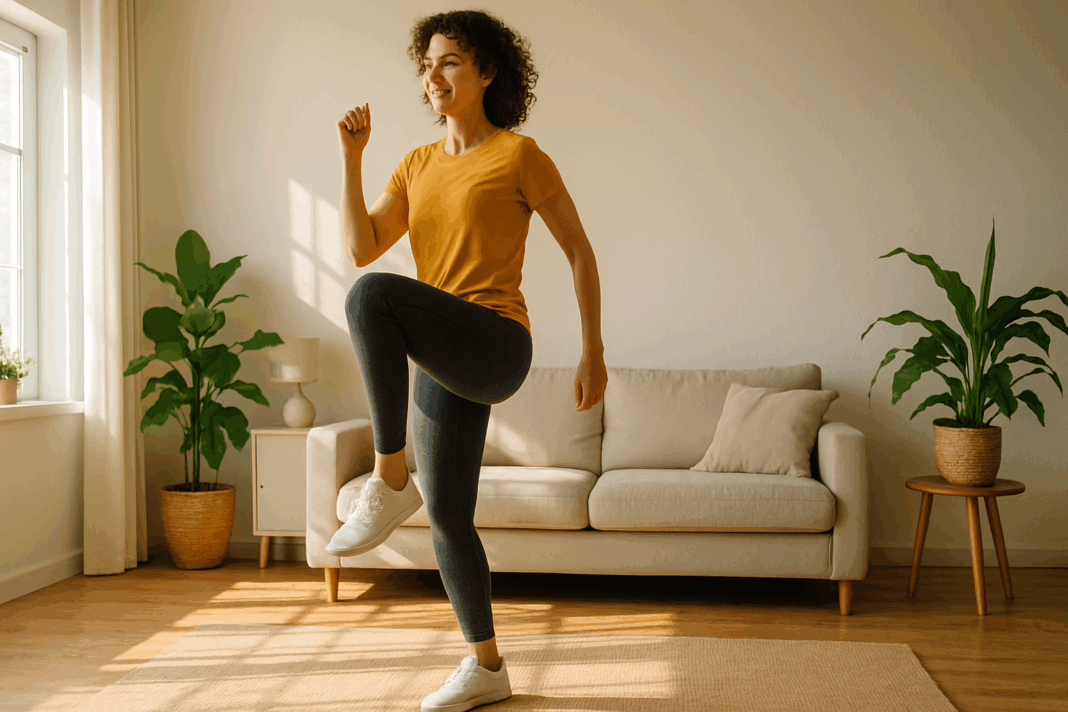Unlocking the Power of At-Home Cardio for Lasting Performance
In an era where convenience, accessibility, and efficiency have taken center stage, home fitness has emerged as a powerful solution for individuals seeking sustainable ways to enhance their physical performance. Whether you’re a seasoned athlete or a beginner looking to improve cardiovascular health, incorporating low impact cardio exercises at home can revolutionize your fitness journey. These exercises not only offer substantial physical benefits, but they also provide a flexible alternative to traditional gym-based routines. With the right approach, even those with limited space or no equipment can build a home fitness regime that supports both endurance and stamina.
You may also like: How to Increase Stamina and Endurance Naturally: Smart Training Tips and Nutrition Habits That Support Cardiovascular Fitness
The beauty of low impact cardio exercises lies in their ability to challenge the body without placing excessive strain on the joints. This makes them particularly suitable for individuals recovering from injury, managing chronic pain, or seeking a gentler approach to fitness. Furthermore, low impact cardio at home is accessible to all ages and skill levels, requiring nothing more than motivation, consistency, and a small corner of your living space. As we delve deeper into the best home workout exercises available, this article will provide not only a curated selection of great home exercises but also evidence-based guidance rooted in principles of exercise science, physiology, and functional training.
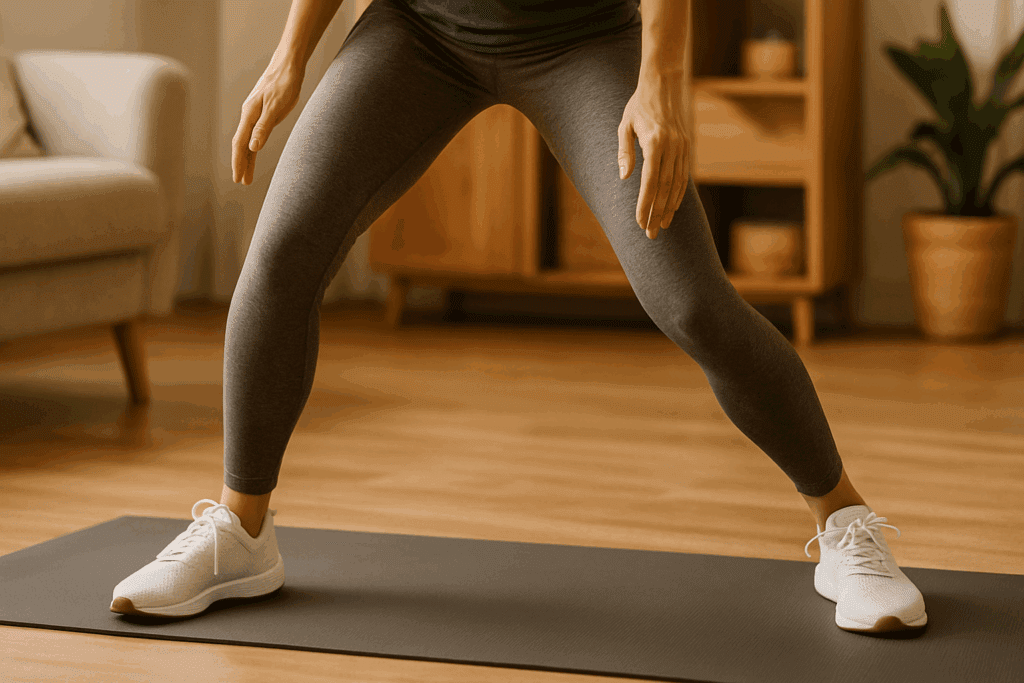
Why Low Impact Cardio Works for Endurance and Stamina
Endurance and stamina are often used interchangeably, but they refer to distinct yet interconnected aspects of physical fitness. Endurance generally relates to the cardiovascular system’s ability to sustain prolonged activity, while stamina involves both physical and mental resilience over time. Low impact cardio exercises serve as an ideal training method for improving both, particularly when performed with consistency and progressive intensity. Unlike high-intensity interval training (HIIT) or plyometric workouts, low impact routines focus on continuous movement that keeps the heart rate elevated without sudden spikes or joint pressure.
Physiologically, low intensity cardio workout exercises stimulate the aerobic system, encouraging the body to use oxygen efficiently. This leads to improved blood flow, enhanced mitochondrial function, and greater overall energy production. Over time, these adaptations translate into increased endurance, allowing you to perform daily tasks with more ease and less fatigue. Mental stamina also improves, as the routine nature of these exercises promotes discipline and stress reduction. In fact, studies have shown that even light cardio workouts can have significant cognitive benefits, including improved focus, mood stabilization, and decreased symptoms of anxiety and depression.
The strategic integration of low impact aerobic exercises at home into your daily routine can also support long-term adherence. Because these exercises are gentler on the body, they reduce the risk of overtraining and burnout—two common pitfalls for those pursuing performance enhancement. Instead, they offer a sustainable pathway to maintaining cardiovascular fitness, making them one of the best training at home methods available today. Whether you’re aiming to enhance athletic performance or simply boost your health, slow cardio exercises can help you get there without compromising your body’s longevity.
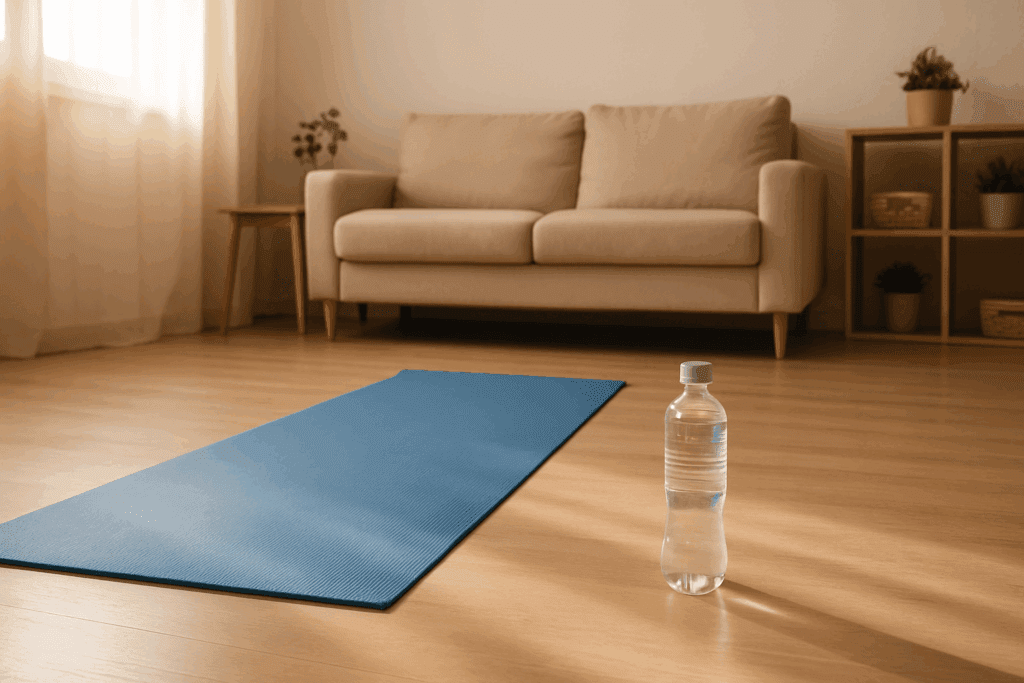
Designing a No Equipment Workout Routine That Works
Creating an effective home fitness regime requires more than just choosing a handful of exercises and performing them at random. For optimal results, it’s essential to build a structured plan that includes a balance of movement patterns, recovery intervals, and progression techniques. The best home workout exercises are those that engage multiple muscle groups, elevate the heart rate, and maintain a manageable level of perceived exertion. Fortunately, many types of exercise at home meet these criteria without requiring any special gear.
A simple yet powerful no equipment workout might begin with a dynamic warm-up consisting of arm circles, leg swings, and marching in place to prepare the body for movement. Following this, a series of light cardio exercises such as step taps, high knee marches, and standing jacks can serve as the foundation of the workout. These movements engage the cardiovascular system while promoting joint mobility and muscle activation. To maintain intensity without increasing impact, incorporate low impact cardio moves like modified mountain climbers, side-to-side lunges, or standing oblique crunches.
Progression is key to maintaining motivation and seeing results. Gradually increasing the duration, frequency, or complexity of your quick workout exercises helps stimulate further adaptations. For instance, adding tempo variations, arm movements, or balance challenges can transform a basic exercise into a more demanding full-body movement. Recovery periods should also be built into your routine, allowing the body to adapt and rebuild. By rotating between easy fast workouts and slightly longer sessions, you can create a holistic plan that supports steady improvement in both endurance and stamina.
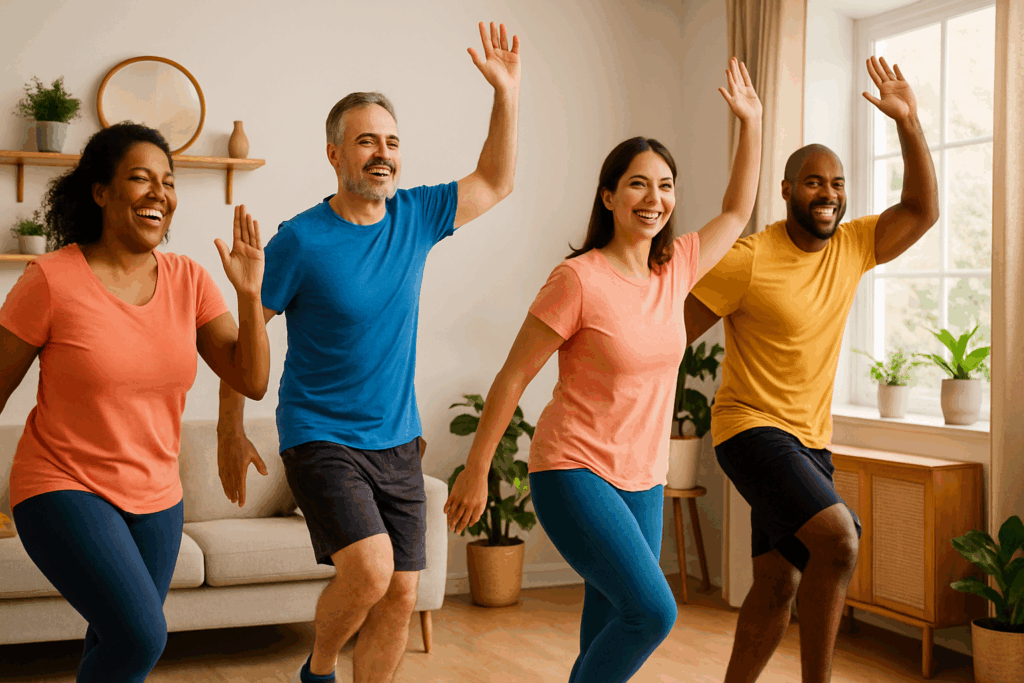
Exploring the Best Exercises at Home for Full-Body Engagement
When it comes to identifying the best exercises at home for cardiovascular health and muscular endurance, variety plays a crucial role. A diversified routine not only prevents boredom but also ensures comprehensive development by targeting different muscle groups and movement patterns. Among the most effective low impact exercises at home are walking in place, knee lifts, side steps, and seated cardio routines for those with mobility challenges. These good home exercises can be easily modified to suit individual needs, fitness levels, and personal preferences.
Great home exercises often combine rhythmic motion with moderate resistance. For example, slow and controlled squats engage the lower body while also raising the heart rate when performed continuously. Arm reaches paired with step-outs target the upper and lower body simultaneously, providing a functional training effect. Other valuable movements include low-impact jumping jacks (without the jump), alternating toe taps, and low-kick cardio sequences. Each of these workouts you can do at home contributes to improved circulation, lung capacity, and muscular endurance.
Consistency is more important than complexity. Rather than overcomplicating your routine with a wide array of exercises, focus on mastering a handful of foundational moves that offer maximum benefit. Once proficiency is achieved, small modifications can be introduced to maintain challenge and interest. This approach not only builds confidence but also reinforces neuromuscular efficiency, allowing you to perform each exercise with greater coordination, control, and effectiveness. Over time, these patterns become second nature, reinforcing the role of fitness in home life as a cornerstone of overall wellness.

The Science Behind Light Cardio and Its Endurance Benefits
Light cardio workouts may appear less intense on the surface, but their benefits are well-documented in exercise physiology literature. By operating within the lower ranges of your heart rate zones—typically 50 to 65 percent of your maximum heart rate—you enable the body to improve fat oxidation, cardiovascular efficiency, and muscular endurance without entering a state of physical stress. Low intensity cardio exercises also help increase the number of capillaries in muscle tissue, enhancing oxygen delivery and waste removal during activity.
This type of training is especially effective for building a strong aerobic base, which serves as the foundation for higher-intensity workouts and athletic performance. Engaging in light cardio exercises regularly improves stroke volume—the amount of blood pumped by the heart with each beat—resulting in more efficient circulation and reduced resting heart rate. These adaptations not only contribute to better physical performance but also promote long-term heart health and metabolic regulation.
From a psychological standpoint, slow cardio exercises provide a calming, meditative effect that can support mental recovery. The repetitive nature of movements such as step taps or knee lifts fosters mindfulness, allowing individuals to tune into their breath and bodily sensations. This makes low impact cardio workout at home ideal for stress relief, active recovery days, or as a warm-up and cool-down in a broader training plan. As part of a comprehensive fitness strategy, light cardio supports holistic well-being by balancing physical exertion with restorative movement.
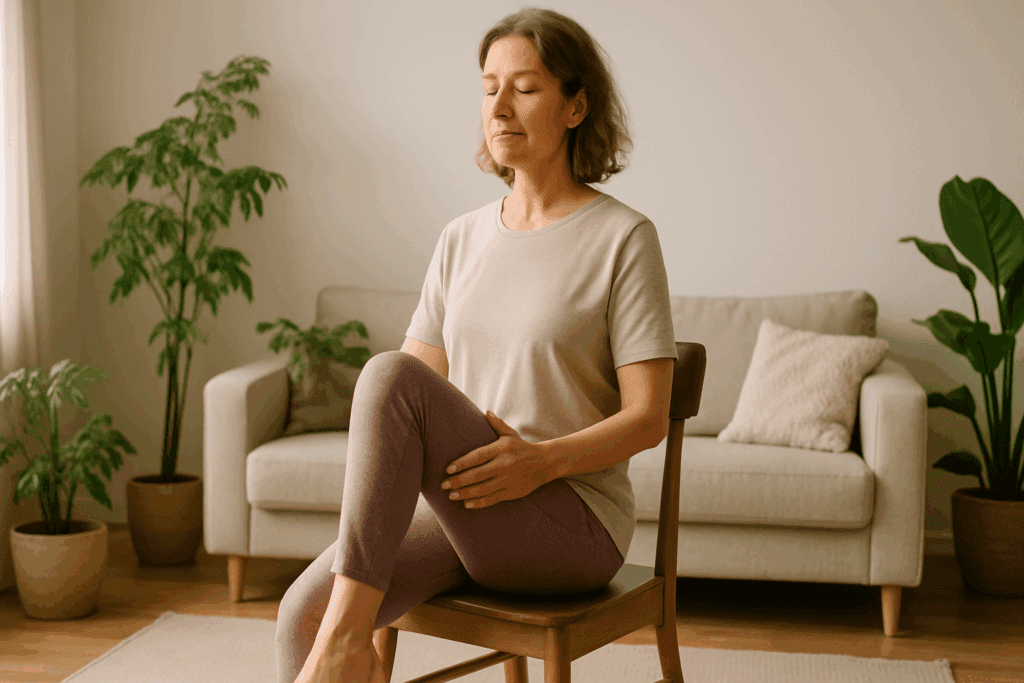
Making Space: Cardio Exercises for Small Spaces and Tight Schedules
One of the most appealing aspects of low impact cardio at home is its adaptability to various living environments and schedules. In modern urban life, not everyone has the luxury of a dedicated workout room or uninterrupted time blocks. However, cardio exercises for small spaces make it possible to achieve significant fitness gains without the need for expansive setups. These exercises emphasize vertical movement, lateral motion, and bodyweight resistance to maximize output within a compact area.
Movements like standing knee drives, wall marches, or step-touches can be performed in place and require only a few square feet. For those juggling professional obligations and household responsibilities, quick easy workouts lasting 10 to 15 minutes can yield noticeable improvements in stamina when practiced consistently. Even incorporating two or three micro-workouts throughout the day can add up to a meaningful cardiovascular load. This segmented approach aligns with findings in exercise science that emphasize cumulative activity’s role in promoting health.
Time-efficient strategies are particularly valuable for individuals new to exercise or those returning after a hiatus. By eliminating the need for commutes, gym fees, or complex scheduling, fitness in home becomes a practical solution for maintaining regular physical activity. With minimal planning and no equipment, users can design effective routines tailored to their energy levels and availability. This democratization of exercise is empowering, allowing more people to embrace an active lifestyle regardless of their circumstances or physical limitations.

Sustaining Progress with No Impact Cardio and Smart Recovery
While low impact doesn’t mean low effectiveness, it’s still essential to respect the body’s need for recovery and adaptation. Incorporating no impact cardio exercises into your routine—such as chair-based marches, gentle yoga flows, or mobility drills—can help maintain movement on days when energy levels are low or soreness is present. These restorative activities ensure that momentum isn’t lost, even during periods of reduced intensity.
Recovery is an often-overlooked component of any successful home fitness regime. Adequate sleep, hydration, and nutrition all play a role, as does active recovery in the form of light movement. Including low intensity cardio workout exercises as part of your recovery days can aid in circulation, reduce muscle stiffness, and support mental clarity. It’s this balance of effort and ease that creates a sustainable model for long-term endurance training.
Furthermore, listening to your body is critical. Adjusting intensity, modifying range of motion, or shortening session duration are all valid strategies when managing fatigue, discomfort, or scheduling conflicts. With a flexible mindset and a toolkit of low impact exercises at home, you can remain consistent without risking injury or burnout. Ultimately, success in home-based training stems from building a routine that’s adaptable, enjoyable, and aligned with your personal goals and lifestyle.
Frequently Asked Questions: Low Impact Cardio and Home Fitness Performance
1. How can I measure progress with low impact cardio if there’s no equipment involved?
Progress in a no equipment workout can be tracked using several creative methods beyond relying on gym machines or wearable tech. One effective approach is to use perceived exertion scales—rating how hard you feel your body is working during low impact cardio exercises on a scale of 1 to 10. You can also track improvements in endurance by measuring how long you can perform specific low intensity cardio exercises without fatigue. Journaling changes in mood, energy, and sleep can provide insight into the overall impact of your home fitness regime. Many people also benefit from periodically increasing the number of repetitions or the duration of light cardio workouts to gauge their stamina gains.
2. What’s the difference between slow cardio exercises and no impact cardio exercises?
While both types of exercise are gentle and supportive of joint health, slow cardio exercises generally refer to the pace or tempo of the movement, while no impact cardio exercises focus on eliminating forceful contact with the ground. For instance, slow walking or deliberate step-touches would fall under slow cardio, while seated marches or gentle standing movements with no jumping classify as no impact. Each has its place within a low impact cardio workout at home, depending on your energy levels and physical needs. Including both in your routine can provide variety while reducing the likelihood of injury. These workouts you can do at home are particularly effective for beginners or those managing chronic pain.
3. Can I combine low impact cardio with strength training for better results?
Absolutely. In fact, integrating strength work into your low impact cardio at home routine can lead to better muscle tone, metabolic health, and endurance. For example, combining light resistance movements like bodyweight squats or wall push-ups with cardio exercises for small spaces creates a circuit-style workout that promotes full-body fitness. This hybrid approach aligns with best training at home strategies, especially when aiming to enhance functional strength and cardiovascular efficiency without overloading the joints. If you’re using the best home workout exercises strategically, even your recovery days can promote muscle maintenance. Just be sure to balance exertion with adequate rest.
4. How can I stay motivated to stick to a home fitness regime long-term?
Maintaining motivation in a home fitness regime often requires creating a sense of routine, enjoyment, and visible progress. Setting short-term goals—like completing a certain number of workouts per week—can help sustain momentum. Additionally, alternating between different types of exercise at home, such as light cardio and strength-based sessions, prevents boredom. Visual reminders of your goals and habit-tracking calendars placed near your workout area can reinforce commitment. Choosing good home exercises that you genuinely enjoy also plays a major role in making fitness in home a lifestyle rather than a temporary challenge.
5. Are low intensity cardio workout exercises effective for improving heart health?
Yes, low intensity cardio exercises can significantly enhance cardiovascular health when performed consistently over time. These routines promote better circulation, regulate blood pressure, and increase oxygen delivery throughout the body without placing excess stress on the heart. For individuals new to fitness or recovering from health issues, low impact cardio exercises at home offer a safe and sustainable path to improvement. Activities such as side steps, seated marching, or standing knee lifts are examples of effective low impact cardio moves. When combined with proper hydration and nutrition, these light cardio exercises contribute to long-term heart and lung capacity.
6. What are the best strategies for maximizing results from quick workout exercises?
To maximize outcomes from quick workout exercises, focus on quality over quantity. Engage in movements that use multiple muscle groups simultaneously, like step jacks or knee lifts with arm extensions. These compound motions ensure you’re getting the most out of each minute. Also, try minimizing rest between sets to keep your heart rate elevated throughout. Including different low impact aerobic exercises at home in rotation helps target various muscles and avoid plateau. Lastly, track your performance weekly and adjust your workouts you can do at home to stay challenged and progressing.
7. How can I make low impact cardio more engaging over time?
Adding variety and purpose to your sessions is key. You can try creating themed workouts, such as dance-inspired light cardio workouts or mindfulness-focused sessions incorporating slow breathing and fluid movement. Music also plays a huge role in motivation; syncing your movements with uplifting songs can transform the experience. If space allows, shift locations occasionally—moving from the living room to a balcony or outdoor space can renew your enthusiasm. Keep exploring new combinations of low impact exercises at home to maintain curiosity and avoid monotony.
8. Is it safe to do low impact cardio every day?
In general, yes. Because low impact cardio exercises put minimal strain on the joints and muscles, they are often safe for daily use—especially when the duration and intensity are balanced appropriately. However, it’s wise to vary the movements and include occasional no impact cardio exercises, such as yoga or chair-based mobility work, to promote recovery. Listening to your body and recognizing signs of overuse—such as persistent fatigue or joint soreness—is essential for long-term success. Building a rotation of great home exercises ensures adequate variety and recovery within your fitness in home approach.
9. How can I tailor cardio exercises for small spaces without sacrificing intensity?
You can design effective, intense workouts within even the tightest living spaces by emphasizing movement efficiency. Focus on stationary exercises like high-knee marches, low kickbacks, or controlled lateral steps that challenge coordination and cardiovascular endurance. These types of exercise at home allow for a surprising amount of exertion despite minimal space. Incorporating tempo changes—alternating between slow cardio exercises and bursts of quick easy workouts—helps boost heart rate and calorie burn. Use vertical movement, arm motions, and core engagement to enhance the intensity without expanding your footprint.
10. What role does mental wellness play in a consistent home fitness regime?
Mental wellness is deeply intertwined with physical activity, especially when establishing consistency in your home fitness regime. Engaging in regular light cardio can stimulate endorphins, reduce stress, and help regulate mood. The act of setting aside time for self-care through low impact cardio workout at home can also strengthen your sense of control and resilience. Practicing mindfulness during light cardio workouts—focusing on breath, movement, and posture—amplifies these benefits. As part of a holistic routine, low intensity cardio workout exercises serve not just the body, but the mind, helping foster emotional stability, confidence, and long-term motivation.
Final Thoughts: Building Endurance and Stamina Naturally with the Best Home Workouts
The path to improved endurance and stamina doesn’t require a gym membership, complicated routines, or expensive gear. With the best home workout exercises, anyone can build a robust cardiovascular foundation right from the comfort of their own living space. Whether you’re exploring slow cardio exercises as part of a long-term fitness strategy or seeking quick easy workouts to energize your day, the options are both diverse and effective.
From light cardio workouts that support active recovery to more structured low impact cardio moves that elevate heart rate, the best training at home involves a combination of variety, consistency, and mindful progression. As more individuals discover the benefits of workouts you can do at home, there is growing recognition that performance enhancement and endurance training can be achieved through simplicity and dedication.
As you build your home fitness regime, remember that every step counts—whether it’s a few minutes of marching in place or a 30-minute circuit of low intensity cardio workout exercises. By integrating these good home exercises into your lifestyle, you’re not only supporting your physical health but also cultivating mental resilience and self-discipline. In the end, the journey toward enhanced stamina begins with a single, deliberate movement—and with low impact cardio exercises at home, that journey is more accessible than ever before.
Was this article helpful? Don’t let it stop with you. Share it right now with someone who needs to see it—whether it’s a friend, a colleague, or your whole network. And if staying ahead on this topic matters to you, subscribe to this publication for the most up-to-date information. You’ll get the latest insights delivered straight to you—no searching, no missing out.
Further Reading:
19 Cardio Exercises for a Gym-Free Workout
20 cardio exercises to do at home with minimal equipment, from beginner to advanced
Try This: 6 Low-Impact Cardio Exercises in 20 Minutes or Less

